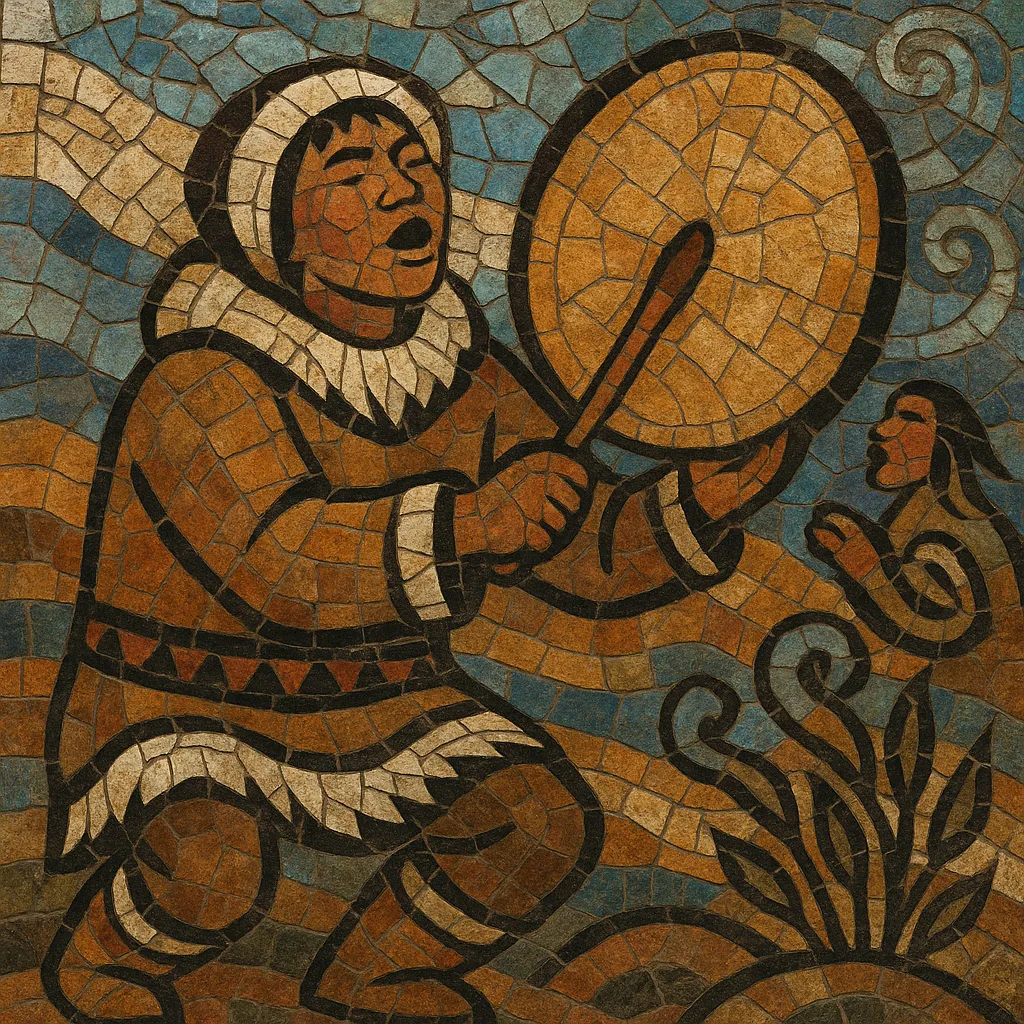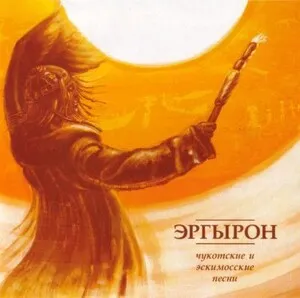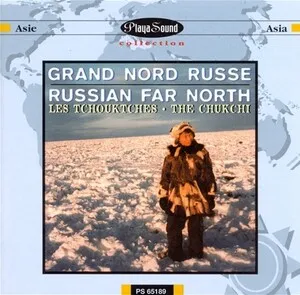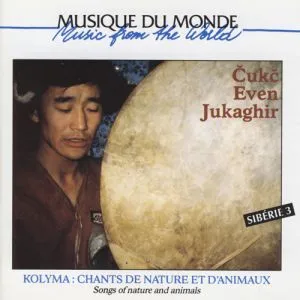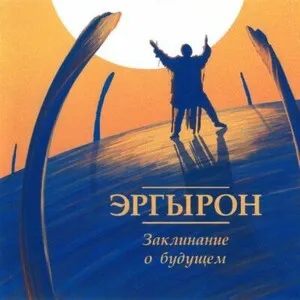Chukchi folk music is the traditional music of the Chukchi (Luoravetlan) people from the Chukotka Peninsula in the Russian Far East. It is an oral, community-centered art that binds ritual, storytelling, dance, and everyday work into a single musical continuum.
The sound world emphasizes strong, steady pulse from a large frame drum, unison or lightly heterophonic group singing, and narrow-range melodies shaped by iterative phrases and vocables. Songs often imitate natural sounds and animals, reflect seacoast and tundra lifeways, and address spirits, ancestors, and the environment. Performance typically combines song, drum, and dance in a shared space (traditionally a yaranga tent), with stamping steps and gesture motifs closely tied to the text and narrative.
Chukchi folk music arose as part of the daily, ceremonial, and seasonal cycles of a reindeer-herding and sea-mammal-hunting people. Songs served practical and spiritual functions: marking hunts and migrations, honoring spirits and ancestors, soothing children, and coordinating communal labor. These practices long predate written documentation and were transmitted entirely by memory and participation.
Sustained contact with Russians began in the 1600s, bringing the first written mentions of Chukchi ritual and song. Systematic collection followed in the late 19th and early 20th centuries when ethnographers such as Vladimir Bogoraz (as part of the Jesup North Pacific Expedition) documented narratives, song texts, and performance contexts, and made some of the earliest phonograph recordings of the region’s music.
In the Soviet era, cultural policy fostered staged folk ensembles. Chukchi repertoire—especially drum-and-dance songs—was arranged for performance on concert stages and radio, while village traditions continued in parallel. This produced two coexisting streams: formalized choreographic shows and living community practice in homes, schools, and festivals.
Since the 1990s, community ensembles, school groups, and the State Chukchi–Eskimo Song and Dance Ensemble have toured and recorded, helping to preserve language and repertoire. Local festivals (including celebrations tied to reindeer herding and coastal hunting) remain key performance contexts. Younger performers sometimes blend traditional drum rhythms and chant-like delivery with modern staging, while elders maintain the core vocal and dance idioms.

